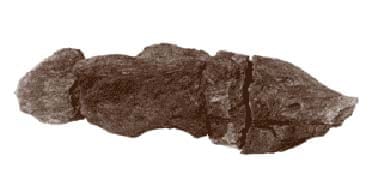The Viking who lay it down probably gave his faeces little thought but more than a millennium later it was, in its hardened form, a York museum's most treasured excrement.
School parties visiting the Archaeological Resource Centre would admire the artefact in a way that only children could. And all was well until two weeks ago when its display stand collapsed in the hands of an unfortunate teacher and, crashing to the floor, the rock-like lump broke into three pieces.
A reconstruction job is now under way to glue the Viking faeces back together again. Named the Lloyds Bank Turd after its discovery on a 1972 dig on the land now occupied by a Lloyds TSB bank in York, it is considered to be the largest complete example of preserved human excrement ever found.
Gill Snape, a student conservator on a placement with the York Arcaeological Trust, who will assist in the operation, said that the natural replacement of organic matter with minerals - a type of fossilisation process known as mineralisation - had given a remarkable weight to the "long and fat" deposit.
"Whoever passed it probably hadn't performed for a few days, shall we say," she said.
Aside from delighting children, and quite a few adults too, the excrement has revealed the diet and health of its human source.
He was not a great vegetable eater, instead living on large amounts of meat and grains such as bran, despite fruit stones, nutshells and other stools containing matter from vegetables such as leeks being found on the same site.
Evidence of several hundred eggs left in the faeces would have meant that his stomach and intestines would have been full of worms.
"This guy had very itchy bowels," Ms Snipe explained.
